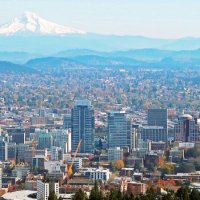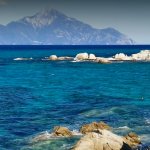Insider Tips To Help You Plan Your Algarve Vacations
The Algarve, Portugal’s southernmost region has become an incredibly popular tourist destination. Its vast coastline, simple restaurants serving exotic meals, and beautiful beaches framed by stunning limestone rocks will keep you coming back.
While the weather is rather cold and wet most of the months, there are plenty of activities to explore in Algarve: visit the local markets, sample win at Vila Vita Parc, or visit take a stroll at the city’s art galleries. Algarve isn’t your regular tourist destination; a few insider tips come in handy when visiting this beautiful Portuguese region:
The Best Places to Visit
Apart from the obvious sandy beaches, there are plenty of places to visit in Algarve. Here are the most popular:
Faro
Faro is Algarve’s capital city hosting a modern manufacturing and industrial hub. The Old Town is Faro’s focal point formed as a result of the 1755 earthquake. The ruins make beautiful picturesque many tourists throng to see. Its cobblestone streets, cathedral, and cafes tucked between rows of artisan workshops also make excellent sightseeing places.
Vilamoura
It is Portugal’s largest marina facility hosting vessels 60m in length and offering up to 825 berths. The town also boasts five golf courses making it a favorite tourist destination for golf fanatics. Its promenade is lined with restaurants and designer boutiques and is an excellent spot for viewing the ocean.
Tavira
It is the region’s most beautiful town thanks to its historical legacy. The Moors and the Romans have shaped its past. It is their settlement by the river that is showcased by a castle, visible today. Also, its hipped roofs define Tavira’s unique architecture.
Other Fun Things To Do
- Enjoy country food: At Monchique, you get to feast on exotic Portugues food including slow-cooked stews, homemade bread, local cheese, and smoked ham
- Visit the museum: The Museu de Portimao is an excellent museum for families. Also explore Sao Bras de Alportel, home to the stunning Ethnographic museum
- Road trip: You can also take a road trip inland to discover the quaint Algarve villages or explore the wild coast of the Costa Vicentina
Getting Around Algarve
Faro, being the country’s capital, is the central transport hub. It has an international airport and flights to Porto. Faro is also the end train station for intercity trains to Coimbra, Lisbon, and Porto. You will need a taxi, a bus, or Uber to visit other destinations within Algarve. Since bus services are tailored to school and worker’s schedules, you may find them considerably reduced during the holidays and weekends.
As such, if you are looking for a more flexible mode of transport, consider car rental services. Their offices are located at the airport and in major towns.
The Best Time to Visit
According to Travel Department, the hot summer months - May, June, July, and August - make the best time to visit Algarve. May and June are less crowded than in July and August. If looking for less crowded facilities, head inland.
December and January are freezing with the sun shining in the middle of the day. Tourists visiting during this period enjoy low hotel rates but might miss out on pleasantries such as sightseeing and eating out as most restaurants are closed.
Additionally, some airlines reduce their flight timetables during winter making flights to Algarve expensive. You may want to avoid visiting the region in November and October due to heavy rain.
What to Pack for an Algarve Vacation
The weather is somewhat unpredictable hence the need to be prepared for changeable weather even during the summer months. Light but warm clothing is ideal. You need non-slip footwear, especially if you are planning to visit the slippery cobblestone streets.
The winter months may have sunny days that allow you to strip down to a pair of shorts and a t-shirt when sunbathing. However, if wandering around, carry a warm sweater, jeans, a warm coat, and non-slip boots.
Winter nights are cold, so you need to carry warm nighties. A pair of sunglasses and an umbrella may also come in handy. The summer months are scorching, so loose and lightweight clothing will do. You also need to bring a shawl or sweater for the evenings as they can get a little breezy.
More to Read:
Previous Posts:





